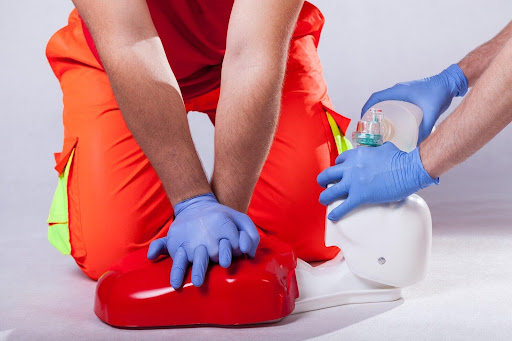Knowing some basic first aid techniques can make a huge difference in an emergency. It’s not just about being prepared; it’s about boosting your confidence in those crucial moments when someone needs help.
With the right skills and a well-stocked first aid kit, you can respond effectively to common injuries and emergencies.
What is First Aid?
First aid refers to the immediate care given to someone who is injured or suddenly becomes ill. It can be as simple as cleaning a cut or as complex as performing CPR.
The goal of first aid is to stabilize the victim until professional medical help arrives. Understanding how to provide immediate support can greatly increase the chances of a positive outcome.
Essential First Aid Techniques
Learning some essential first aid techniques can help you feel prepared when emergencies arise. Here are a few crucial techniques every person should know:
CPR (Cardiopulmonary Resuscitation)
CPR is a lifesaving technique useful in emergencies when someone’s breathing or heartbeat has stopped. It involves a combination of chest compressions and rescue breaths to help maintain blood flow and provide oxygen to the brain.
If you see someone collapse, always call for help first. Then, begin CPR without hesitation.
How to Control Bleeding
Severe bleeding can be life-threatening. To control bleeding, apply direct pressure to the wound using a clean cloth or your hands.
If the cloth becomes soaked, do not remove it; instead, add another layer on top. This method helps to form a clot and minimize blood loss. If bleeding does not stop after a few minutes, more advanced medical care may be needed.
Treating Burns
Burns can be painful and require immediate attention. For minor burns, cool the burn area with running cool (not cold) water for about ten minutes.
This helps reduce swelling and pain. Cover the burn with a clean, non-stick bandage, and avoid applying ice or ointments that could worsen the injury.
Creating and Using a First Aid Kit
Having a well-prepared first aid kit can make managing minor injuries easier. A good first aid kit should contain essential items like band-aids, antiseptics, gauze pads, adhesive tape, scissors, and tweezers.
Your first aid kit should be easily accessible and regularly checked to replenish supplies as they are used. Knowing how to use the items in your first aid kit effectively can boost your confidence when responding to an emergency.
Understanding When to Call for Help
Sometimes, even with first aid techniques, a situation may require professional medical assistance. Knowing when to call for help is crucial. If the person is unresponsive, not breathing, or has severe injuries (like deep cuts or broken bones), don’t hesitate to call emergency services.
In addition, do not wait to call if you are unsure about the severity of the injury. It’s better to err on the side of caution when someone’s health is at stake.
Learning More First Aid Techniques
Many organizations offer first aid and CPR courses to help you learn more advanced techniques. Gaining formal training boosts your knowledge and equips you with the confidence to handle emergencies effectively.
Visit https://cprcertificationnow.com/collections/cpr-and-first-aid-certifications to explore certification options that are available to you.
Be Prepared for Emergencies
Knowing first aid techniques not only empowers you with lifesaving skills but also boosts your confidence in emergencies. With the right knowledge and a well-maintained first aid kit, you can provide immediate help when it counts. Remember, being prepared today can change the outcome for someone in need tomorrow.
Did you find this helpful? Don’t forget to visit our website and read more.

